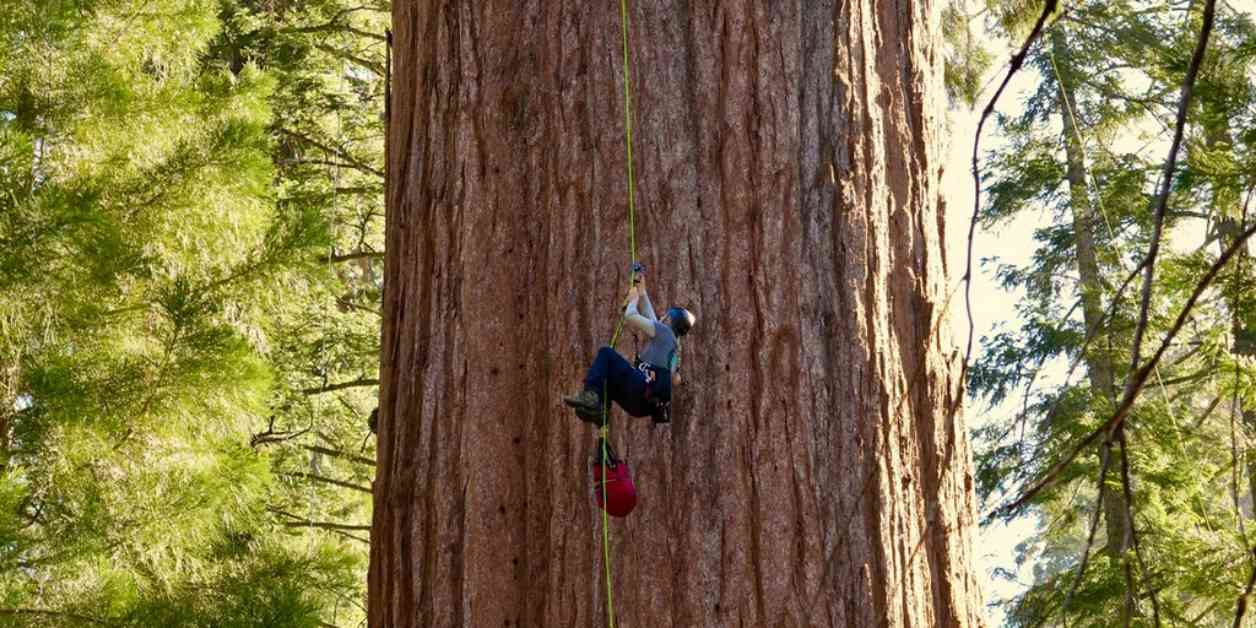High in the canopy of General Sherman, the world’s largest tree, a group of researchers recently embarked on a mission to investigate a potential threat to giant sequoias: bark beetles. These climbers, led by Anthony Ambrose, Executive Director of the Ancient Forest Society, descended from the towering 2,200-year-old tree with optimistic news – General Sherman appeared to be in good health and capable of fending off any potential beetle attacks.
This groundbreaking expedition marked the first time climbers had ever scaled the iconic 275-foot sequoia, a popular tourist attraction in Sequoia National Park. Giant sequoias, known as the Earth’s largest living beings, have thrived in California’s western Sierra Nevada range for millennia. However, as climate conditions become increasingly hotter and drier, these seemingly indestructible trees face growing threats from extreme heat, drought, and wildfires.
In recent years, devastating wildfires have claimed the lives of up to 20 percent of the world’s 75,000 mature sequoias. Ben Blom, Director of Stewardship and Restoration at Save the Redwoods League, emphasized that climate-driven wildfires pose the most significant risk to these ancient trees. Yet, the emergence of bark beetles as a new threat has sparked concerns among researchers.
While bark beetles have historically coexisted with sequoias in California, recent beetle infestations have led to the demise of approximately 40 sequoia trees, primarily within national parks. The beetles bore into the trees from the canopy, weakening them to a point where they can no longer defend themselves, ultimately resulting in death. This unexpected vulnerability has prompted further investigation into the behavior and impact of these beetles on sequoia populations.
During the health inspection of General Sherman, conducted by the Giant Sequoia Lands Coalition, a collaborative effort involving various stakeholders, researchers explored potential methods to monitor and detect beetle infestations more effectively. While climbing every sequoia tree is impractical, the utilization of drones equipped with sensors and satellite imagery shows promise in detecting beetle activity on a larger scale.
Moving forward, officials are prepared to implement strategies such as spraying water, removing branches, or employing chemical treatments to combat beetle attacks if necessary. Clay Jordan, Superintendent for Sequoia and Kings Canyon National Parks, stressed the importance of understanding the changing dynamics between sequoias and bark beetles to ensure the long-term preservation of these ancient giants.
As researchers continue to unravel the complexities of this newfound threat to giant sequoias, the health monitoring program established by the Giant Sequoia Lands Coalition aims to safeguard these majestic trees for generations to come. The resilience of these ancient sequoias, which have withstood the test of time, underscores the urgency of studying and addressing the evolving challenges they face in a changing climate.




